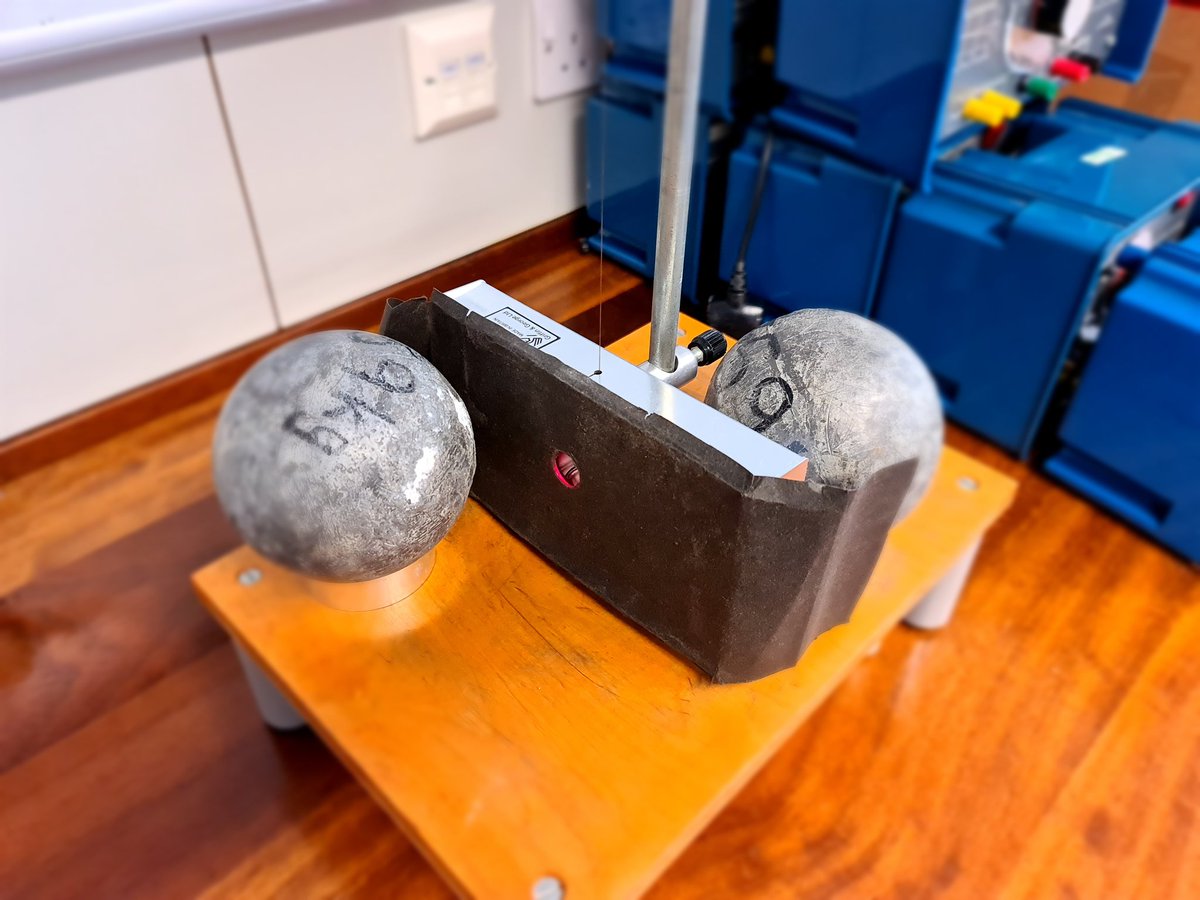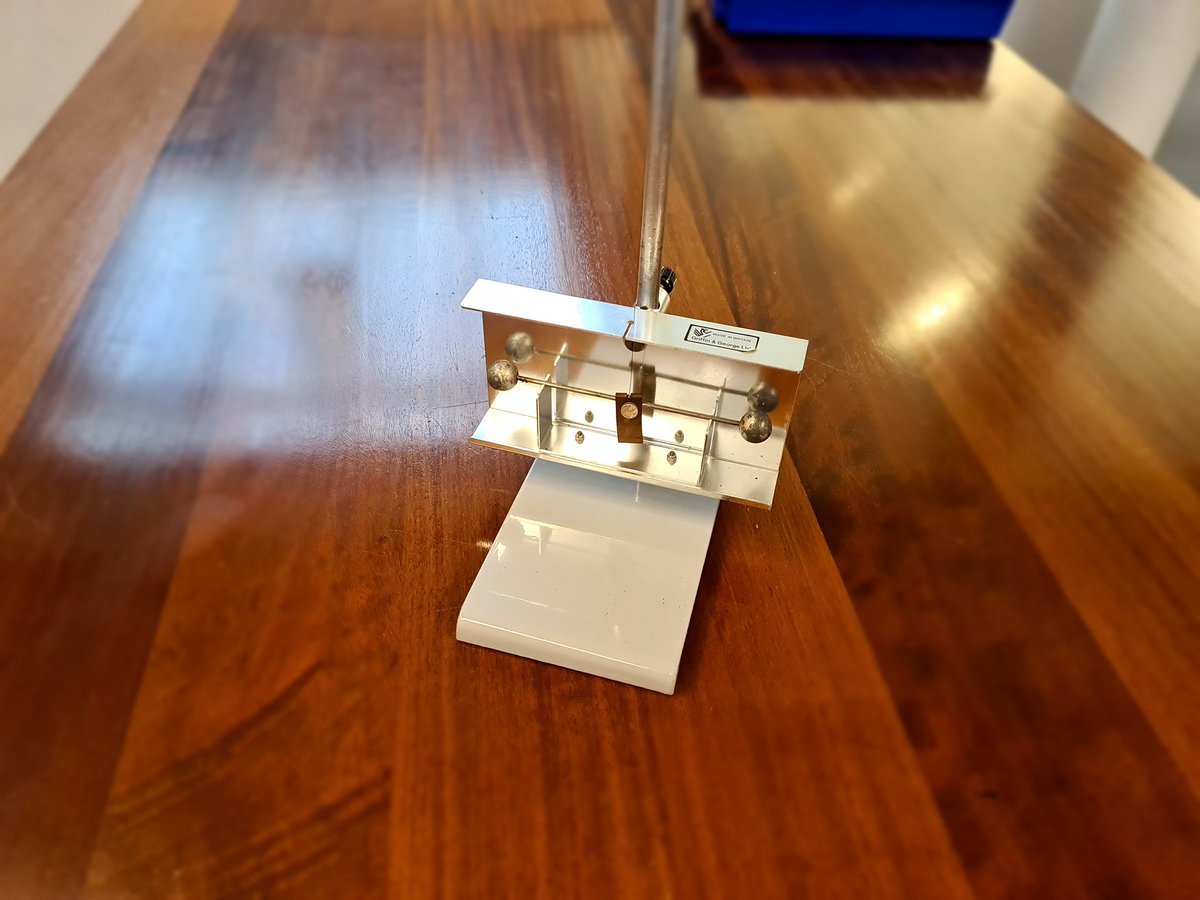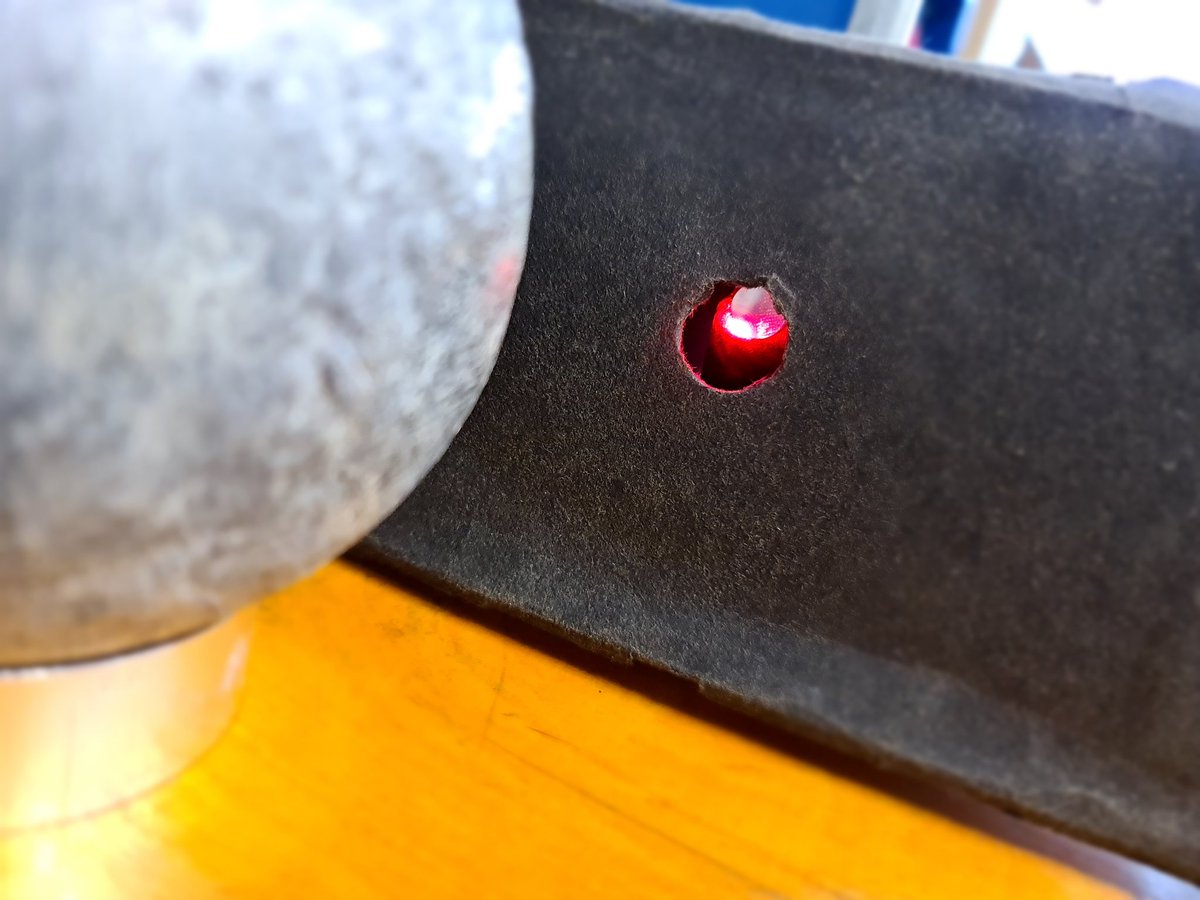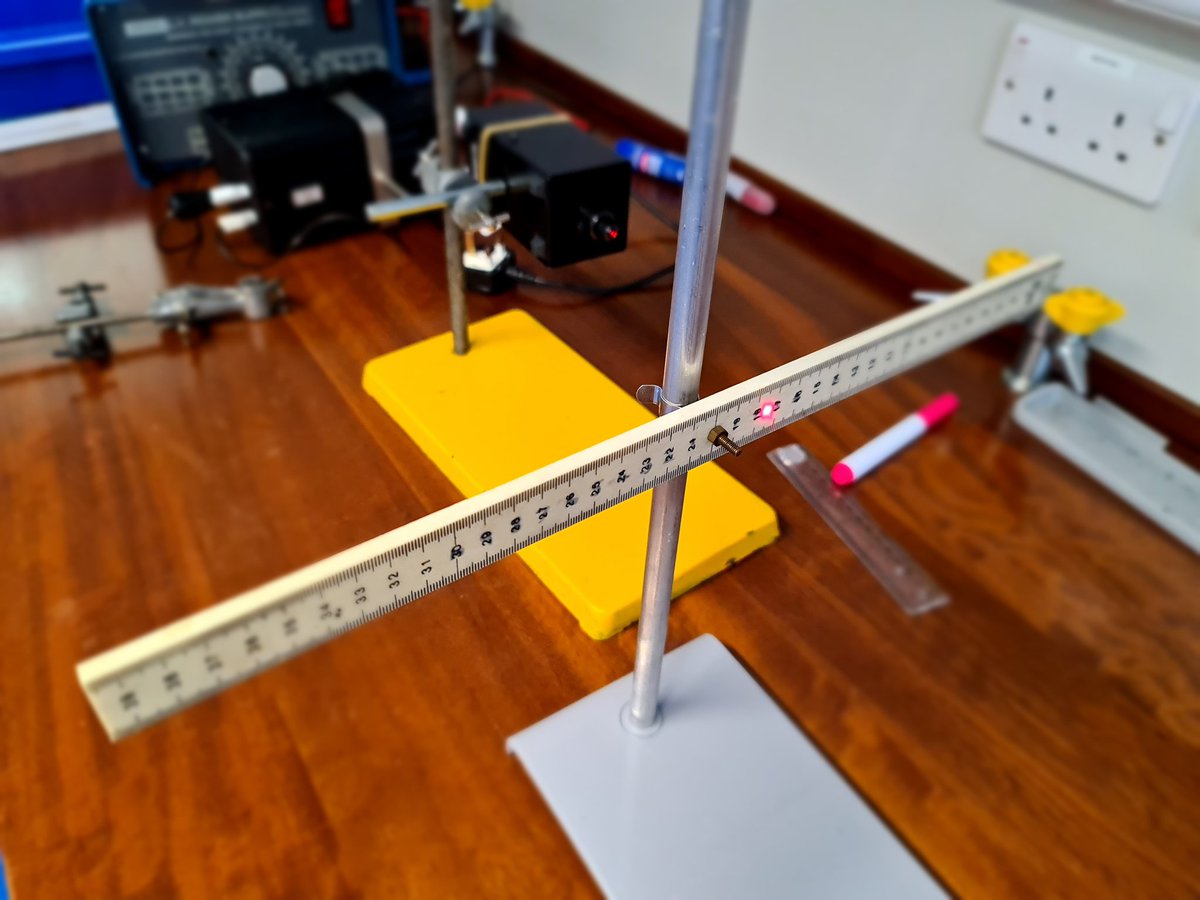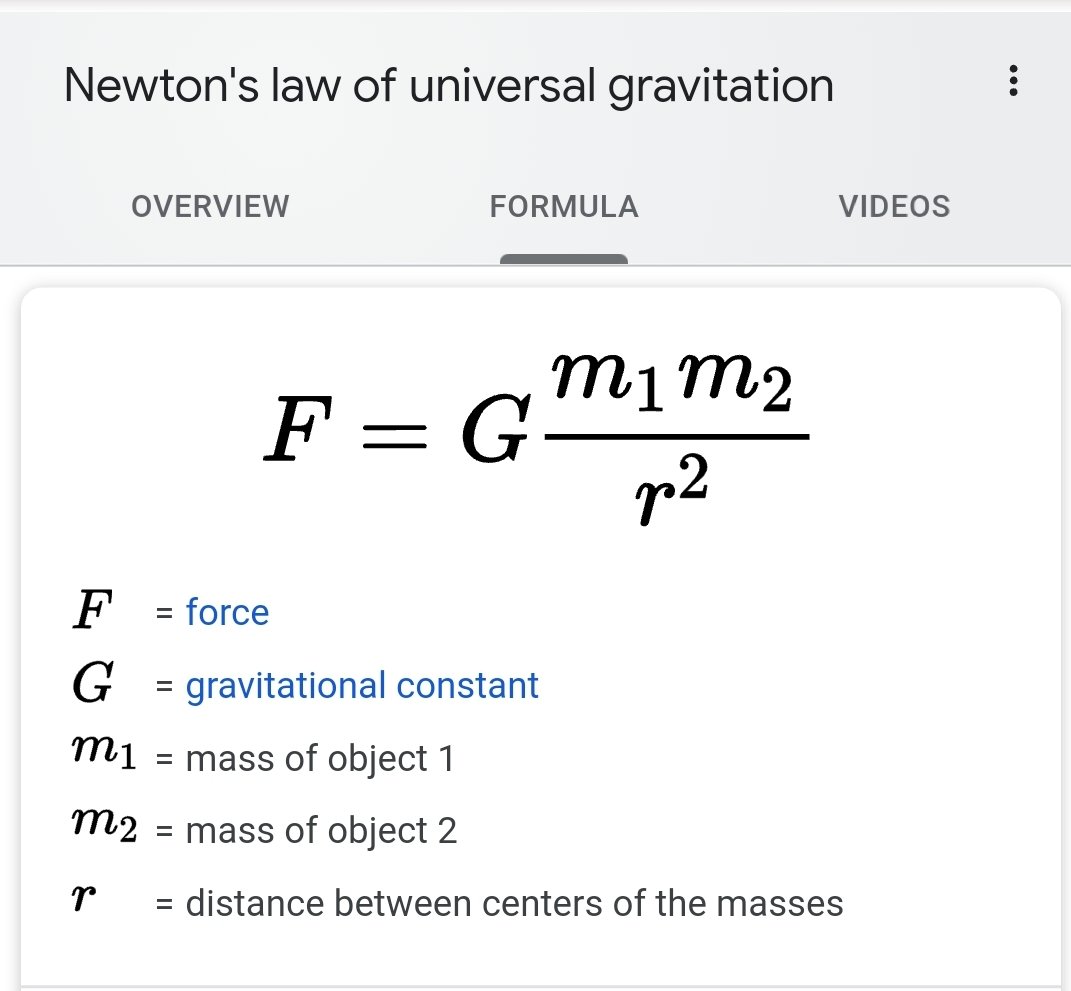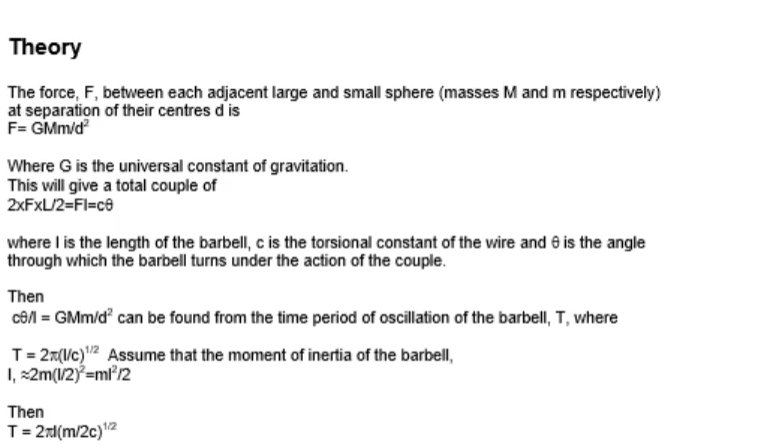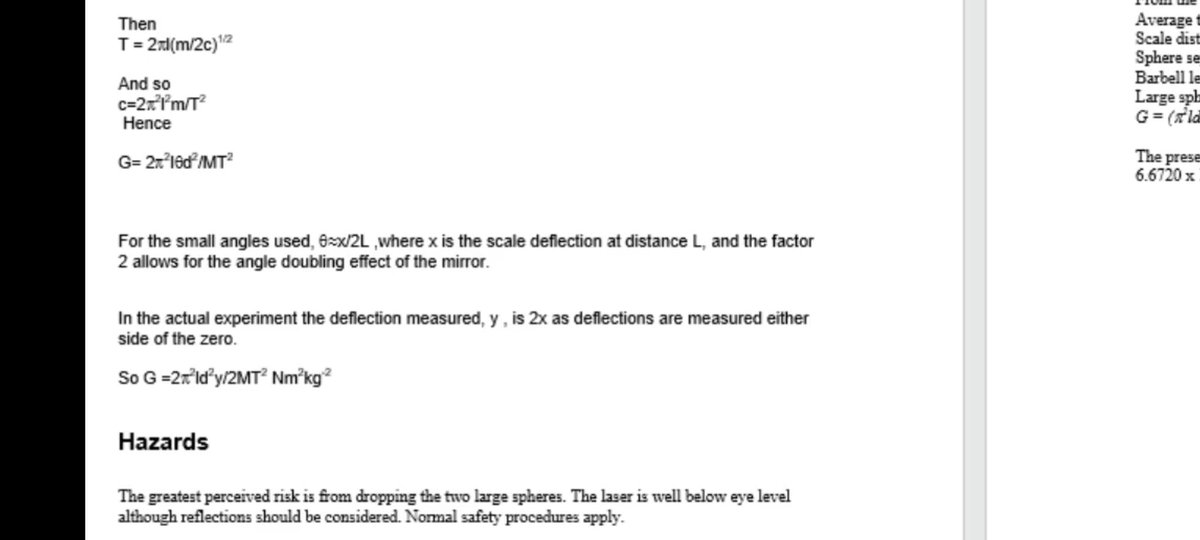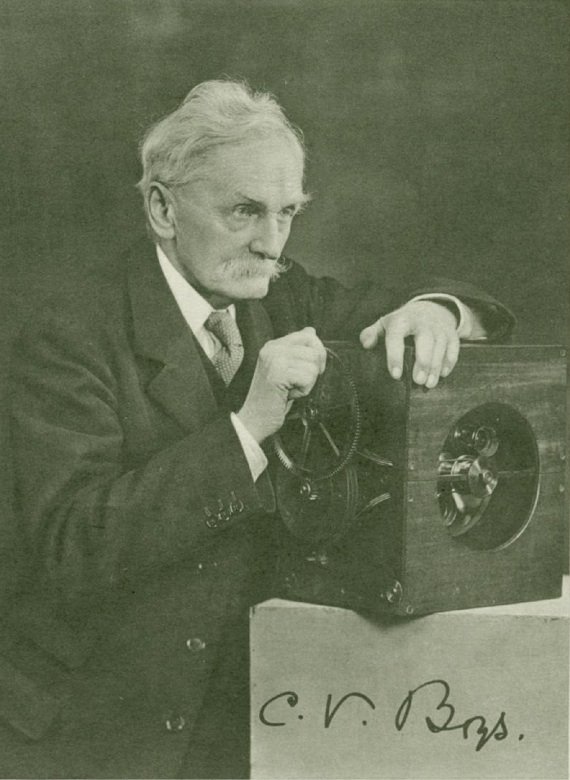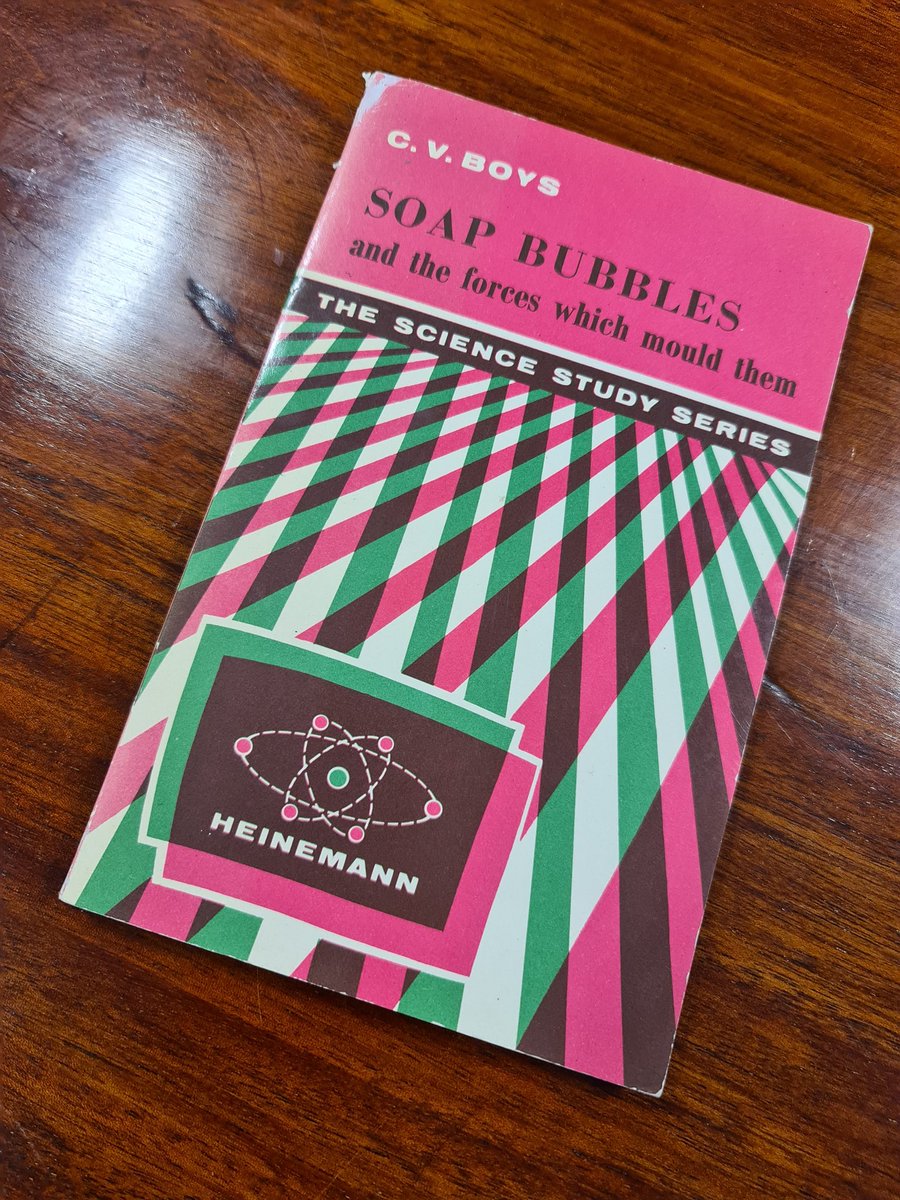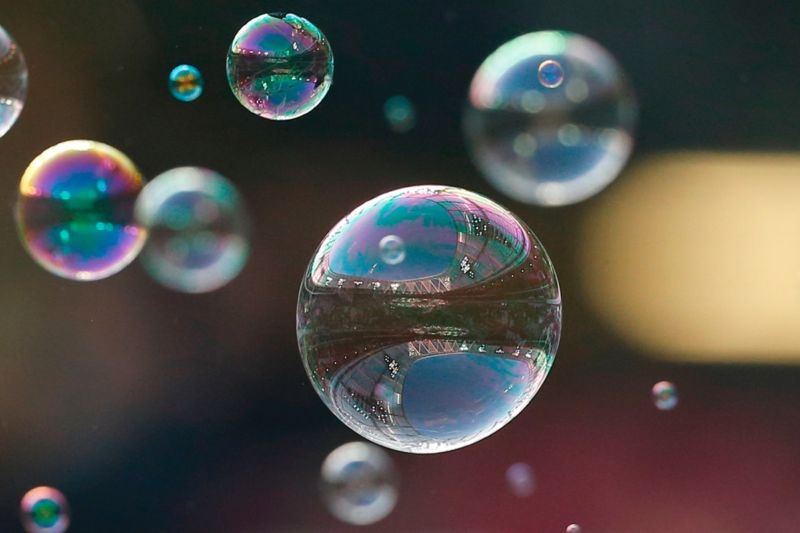How do we know the strength of gravity? How much force exists between two masses at a set distance apart? Let me talk you through the Cavendish big G experiment. #FromThePreproom #iteachphysics
The apparatus is a small pair of of metal spheres on the end of a rod. The rod hangs perfectly balanced on a thread. A small mirror is attached to the rod so that any rotation could be detected because any reflected beam of light would shift relative to the incident ray.
A cover goes over this, with a small hole so that a laser beam can still hit the mirror and reflect back.
Opposite, we have the laser and a ruler set up to show any deflection of the returning reflected laser beam.
What Cavendish did was bring two much heavier balls close to the apparatus and observe how much the smaller apparatus twisted.
Any rotation of the apparatus can then be seen because of the displacement of the laser beam. The deflection can be read off the ruler and the force causing the apparatus to twist can be measured.
And that basically is it. But hang on. How do we obtain "big G" from that? As expected it is a little more complex. Big G is the constant that makes Newton's law of Universal Gravitation work.
Our senior technician, and physics wizard, Mr Ferguson has made a video explaining how you physically measure G. The first step is repositioning the spheres, first so it pulls one way, then so that it pulls the other way.
This deflection can be seen here. When the beam deflects it undergoes dampened shm before settling on a new value. The average total displacement needs then to be measured.
The period of that oscillation allows you to work out the Torsional Constant for the wire - which basically is how much force the wire needs to twist by a certain angle.
With this apparatus we measured G to be 5.318x10‐¹¹ Nm²kg-² which is close enough!
In an interesting historical note the small apparatus we are using is in the style developed by Sir Charles Vernon Boys. Henry Cavendish 100 years earlier never measured G, but famously measured the density of the Earth with the same equipment.
Boys, born in the village of Wing 2 miles from @UppinghamSchool, complained of the experiment "not only have I had to give up holidays for the last three years, but to sit up all Saturday and Sunday nights at the end of a week's work". We have one of his books in our library.
With Big G being so tiresome, it is no suprise that he went on to find pleasure in working out the physics of bubbles.
If you wish to set up big G yourself then please have a watch of this video put together by Mr Ferguson.

 Read on Twitter
Read on Twitter